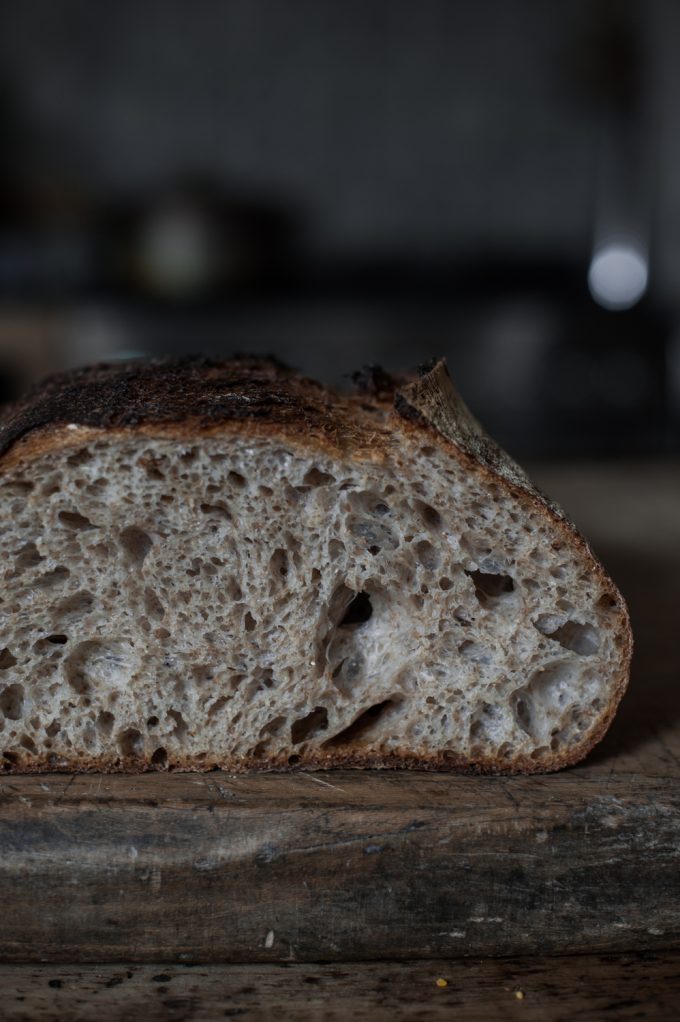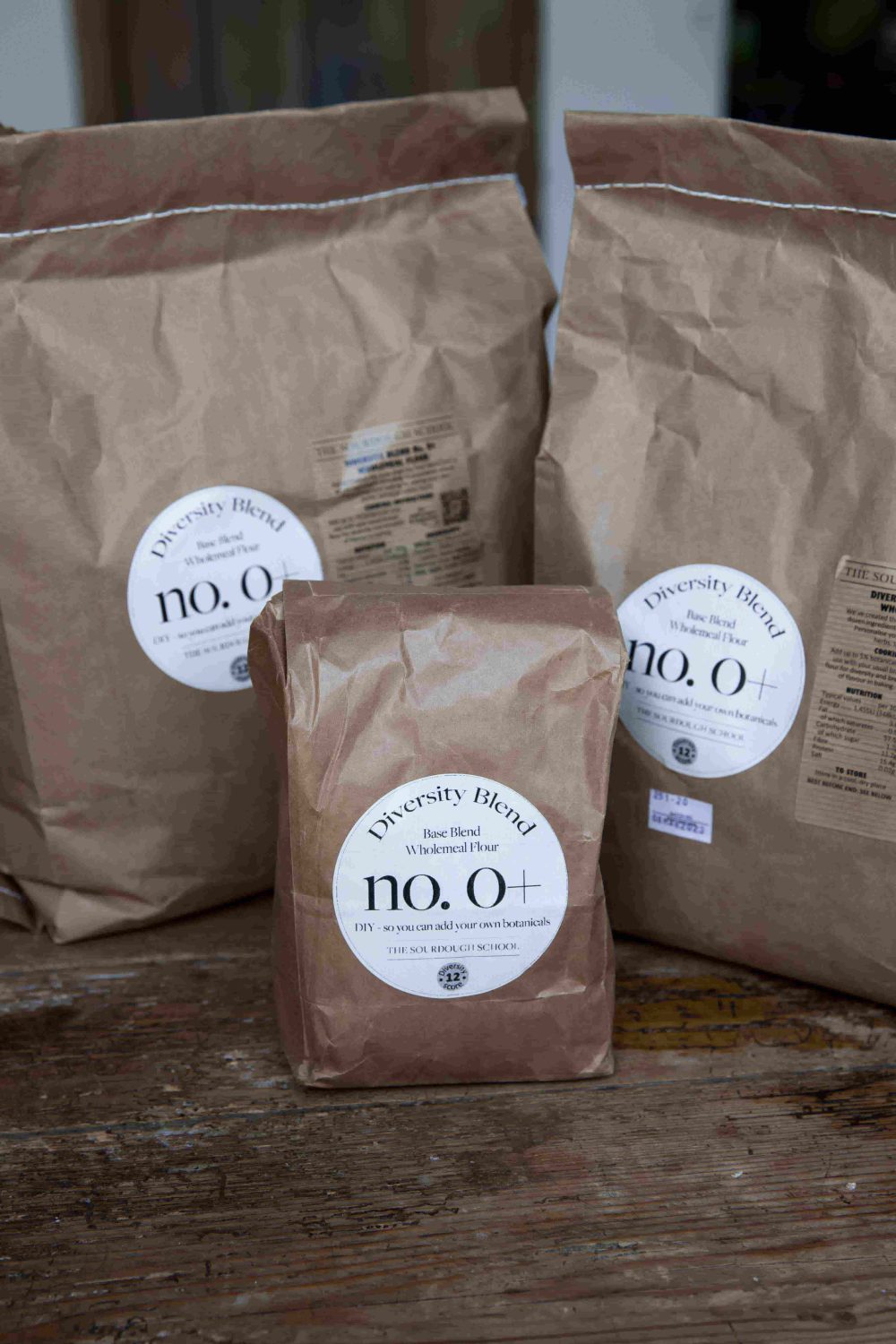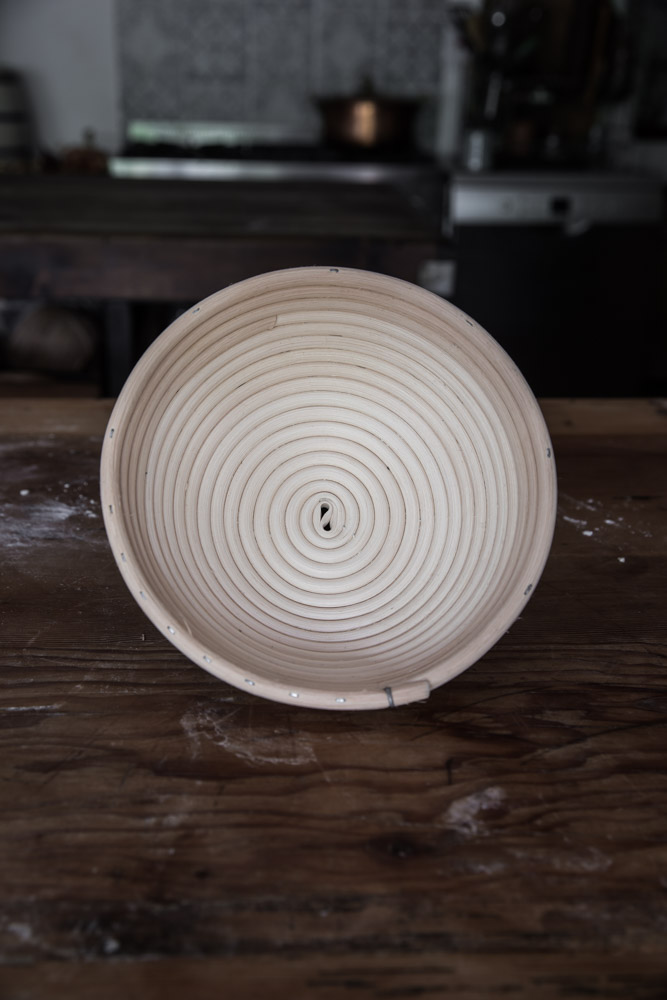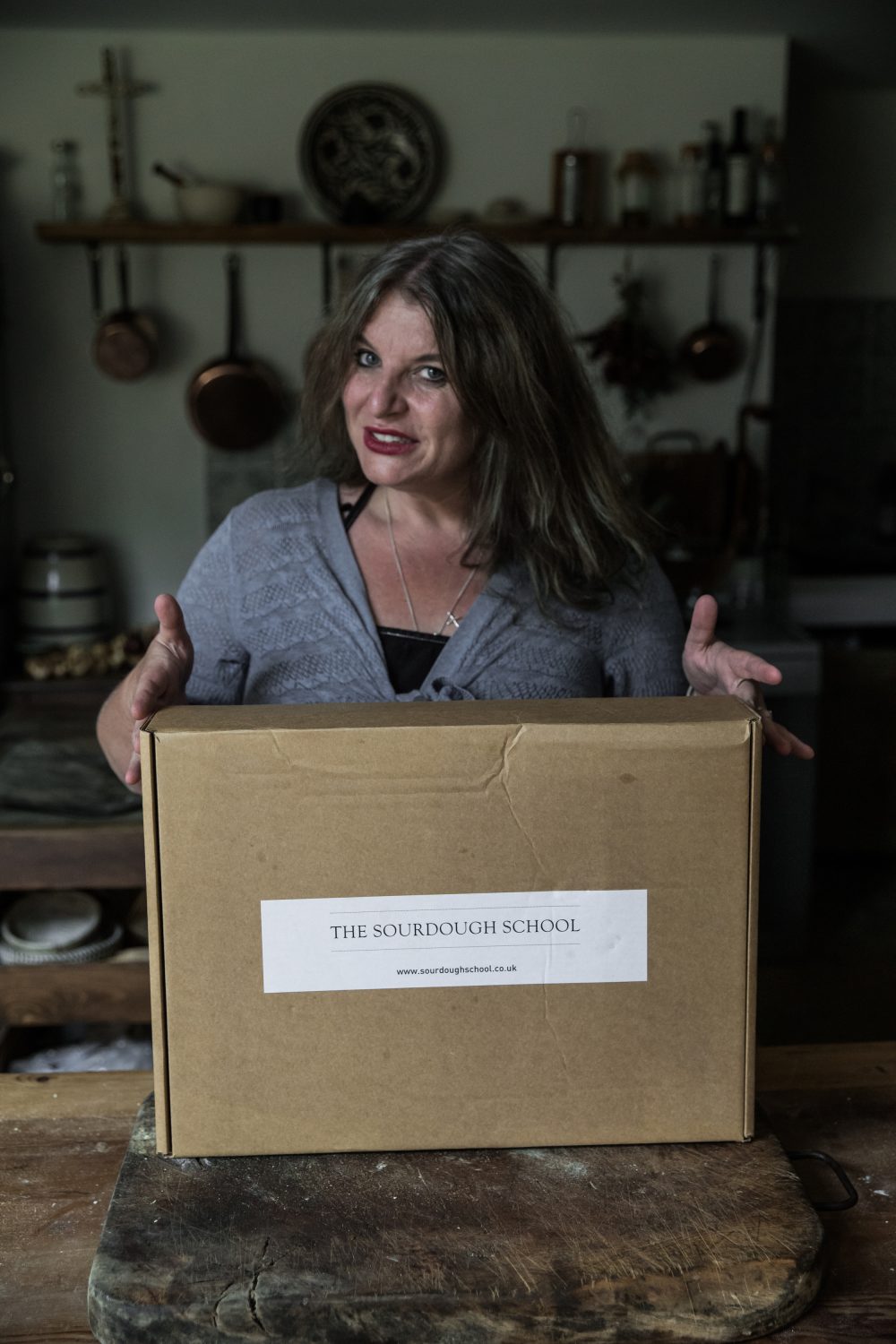 I first came across Gilchesters Organics in the summer of 2010. It wasn’t like any flour I had used before, for a start it was grown in the UK. I was further intrigued to discover that Andrew and Bille Wilkinson, who owns the farm, not only grew their wheat organically but they milled the flour themselves too. I phoned to find out more and not long afterwards Billie kindly sent me a box with the full range of their flours to try. I tentatively made my first sourdough using Gilchesters and was delighted when it made outstanding sourdough bread. I’ve been meaning to get up to visit the farm ever since. Last week we went to Hadrians Wall – the views were stunning. Sadly though I did not get the chance to catch up with Bille and Andrew; as with all the best-laid plans of mice and men, when I was close by they were away, so I will have to go back another time. It did, however, prompt me to write about the flour. Wholemeal flour has become one of my absolute favourites. I use it to teach the British Wholemeal Sourdough Course. The flavour of sourdough bread made with this flour is truly exceptional. It is complex, sweet, fruity and has a moist tender crumb. You can really get a sense of the whole grain in the bread and almost detect the wheat germ oil in the crumb. It is delicious, but the flour appeals to me on another level. Gilchesters defies all convention when thinking about growing wheat. It is UK flour that is sustainably grown, without the use of artificial fertilisers, pesticides, herbicides, and stored without the use of anti-fungicides. It is a truly ethical product.
I first came across Gilchesters Organics in the summer of 2010. It wasn’t like any flour I had used before, for a start it was grown in the UK. I was further intrigued to discover that Andrew and Bille Wilkinson, who owns the farm, not only grew their wheat organically but they milled the flour themselves too. I phoned to find out more and not long afterwards Billie kindly sent me a box with the full range of their flours to try. I tentatively made my first sourdough using Gilchesters and was delighted when it made outstanding sourdough bread. I’ve been meaning to get up to visit the farm ever since. Last week we went to Hadrians Wall – the views were stunning. Sadly though I did not get the chance to catch up with Bille and Andrew; as with all the best-laid plans of mice and men, when I was close by they were away, so I will have to go back another time. It did, however, prompt me to write about the flour. Wholemeal flour has become one of my absolute favourites. I use it to teach the British Wholemeal Sourdough Course. The flavour of sourdough bread made with this flour is truly exceptional. It is complex, sweet, fruity and has a moist tender crumb. You can really get a sense of the whole grain in the bread and almost detect the wheat germ oil in the crumb. It is delicious, but the flour appeals to me on another level. Gilchesters defies all convention when thinking about growing wheat. It is UK flour that is sustainably grown, without the use of artificial fertilisers, pesticides, herbicides, and stored without the use of anti-fungicides. It is a truly ethical product.- Be attentive to your dough. This is a lively flour. Take care not to over prove your dough. Because this wheat is grown in a maritime climate it has a good amount of naturally occurring enzymes, couple that with the fact that this flour is organic, stone-ground and wholemeal it is also high in nutrients which makes it an active dough. You are far better slightly under-proving slightly than over-proving.
- Use a shorter 30-minute autolyse and use a thermometer to control the temperature of your dough. I kept my dough temperature at about 23 degrees during the stretch and folding.
- It needs a good level of hydration. I recommend between 75% and 78% hydration for a manageable dough with a lovely open crumb.
- A long slow ferment in the fridge will result in the crust being darker, and more delicious because more of the starches have been transformed to sugar. It also gives it time to develop some sourness.
- If you are used to working with roller milled flour and find this dough challenging at first then try blending with an organic roller milled 00 flour using a 50:50 split. It is still just as delicious, but sometimes it can help to move to a new flour in stages.




 Cotswold Crunch by FWP Matthews
Cotswold Crunch by FWP Matthews
Hello.
I m just beginning with this wholemeal flour. I d like a more open crumb but not giving up yet. Today I used 50 ww 50 unbleached white. I think I l go a little less whole meal next time.
Can you give me the protein content of the whole meal please. Thanks!
Hello Sam – it is about 13% protein.
I have some Gilchesters Unbleached Organic White bread flour and have not had much success with it so far (it behaves differently from Doves Farm flour). Do you happen to know what the protein content is?
Hi Chris, it’s 12.7% protein.
Hi Vanessa! Many thanks for that information. My lack of success must be down to something other than a good gluten development. Trying Martha de L’s recipe today; 3hrs in and no windowpane. I may have to bake the loaf in a tin 😉
Hi, i just wanted more information on your Organic wholemeal flour. Can you also make chapatti with this flour?
Thank you
I haven’t made any flat breads with tis yet .. but I see not reason why not ..